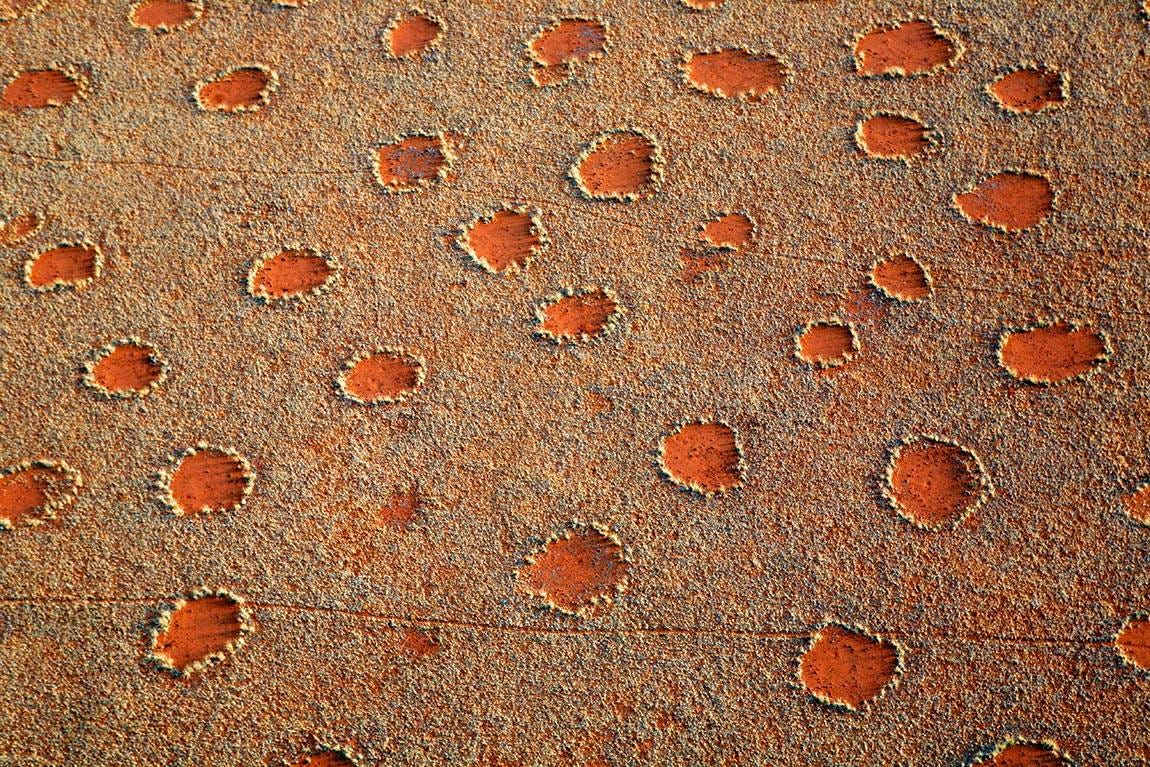Maps, Paths and Fairy Circles
How do you take on big goals without getting lost in the preparation?
I’ve had an odd, intellectual fever dream going for years now; I’d like to learn enough advanced math and physics to make my way through Roger Penrose’s The Road to Reality, and not just understand it, but feel in my bones what it’s like to intuitively get our current best guess about how reality works.
(If you haven’t heard of this book, or Roger Penrose, go check out the Amazon reviews, then listen to Penrose’s appearance on “The Portal“ podcast. He allegedly wrote this tour of all modern physics as a popular science book, but Penrose is so mis-calibrated, or optimistic, about non-Penrosian math ability that physics and math professors routinely flame out.)
There is a dark forest of confusion between me and my goal. How do I make it through?
I can think of two extreme strategies. I can just start walking down the trail and see what happens. Or I can memorize the map.
Walking down the trail blind means starting the book with no preparation. When I hit some math I don’t know, go learn it, then keep going, and ping pong back and forth for 1200 pages. In some sense this is the most efficient possible way through the forest; but doesn’t it sound exhausting? In a real forest this would be deeply traumatic; I’m not interested in becoming intellectual Tom Hanks from Castaway.
Instead of going in blind, I could go memorize the map by working my way through textbooks in every area of physics and the prerequisite math. An intellectual carpet bombing! The forest wouldn’t be so dark; I’d be prepared for any path. But, assuming I could even pull this off, I’d rob Penrose of the chance to guide my Beginner’s mind before it had been infected by more conventional teachers.
The Middle Way
As always, the middle way seems best. Read a few textbooks that will hold my hand — skim the maps, practice crevasse rescue, learn how not to die — then start walking. This dichotomy shows up everywhere, of course. You have to make a scaffold, and, eventually, you have to fill in the details.
You start a drawing by sketching out the broad shapes and structures, then progressively refining the image. You don’t draw a photorealistic ear, then move on to the eye. If you draw this way, your proportions will almost certainly be all fucked up.
You frame the entire building before you start installing plumbing, drywall, electrical lines. You build the airplane’s frame before you start installing systems and working on its aerodynamic lines.
Do you play Go? Reading an entire textbook is like seeding pieces all around the Go board. It’s a great way to start, but it's wise to stop that at some point and focus in on a cluster. Eventually you'll move toward your distant outposts.
Fairy Circles
I listened to a wonderful episode of Steven Strogatz’s “The Joy of X“ podcast with Corina Tarnita about the incredible math behind how termites distribute their mounds across the African savannah. Check out these beautiful “fairy circles”:

(From https://www.princeton.edu/news/2017/01/19/african-fairy-circles-template-natures-many-patterns).
These fairy circles cover maybe 1,500 miles of landscape in Southern Africa. Each circle is a separate termite colony. The spacing between circles turns out to be exactly the spacing you’d predict for colonies trying to balance their goals of maximizing the resources they can take in and minimizing the border that they have to defend against other colonies.
Textbooks allow you to seed fairy circles around your mindscape. They don’t help you fuse the fairy circles together into a massive, powerful organism. You have to do that by coming up with a why, a goal, some reason you’re learning, some thing you want to understand or create.
Back to the forest metaphor. It’s good to read maps. You don’t want to die alone in the woods. But too much safety is boring.
(If you’ve got a moment, I’d love to hear how you handle the balance in your own life. Send me a note!)

